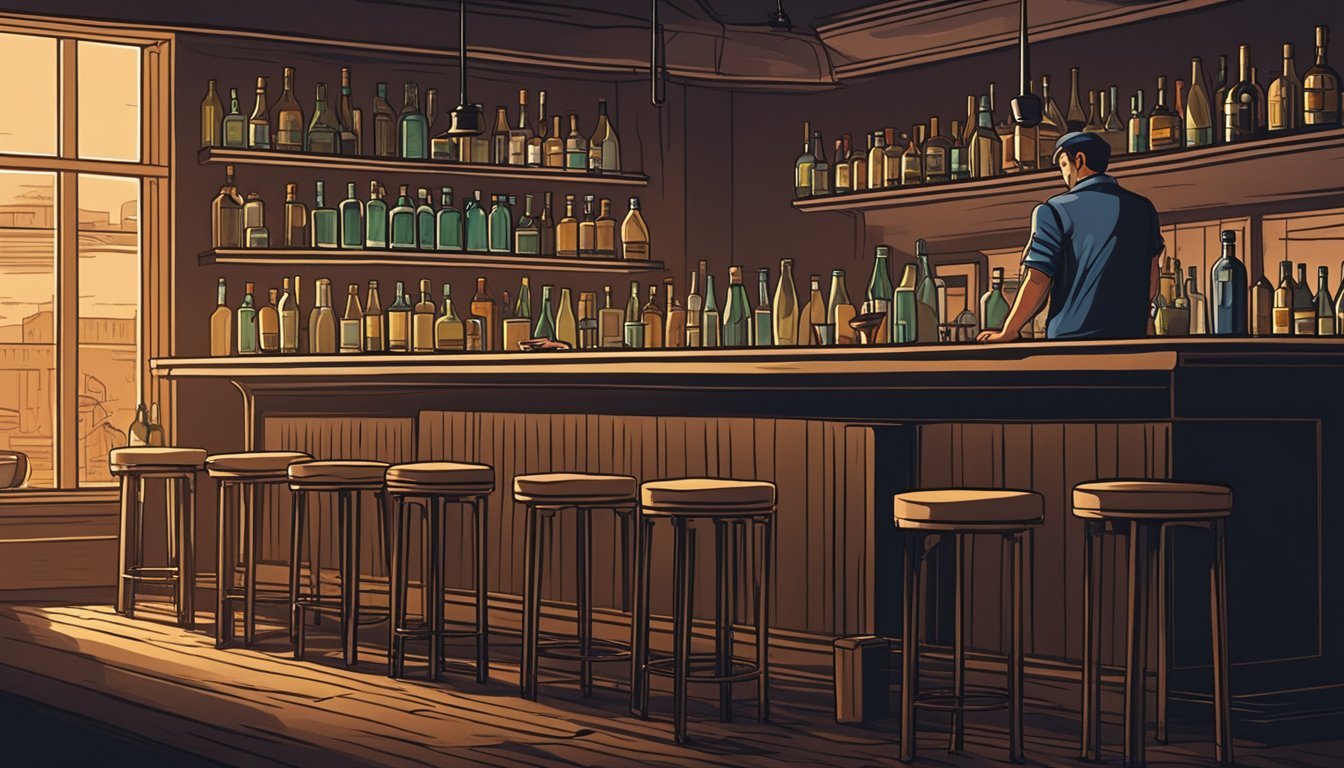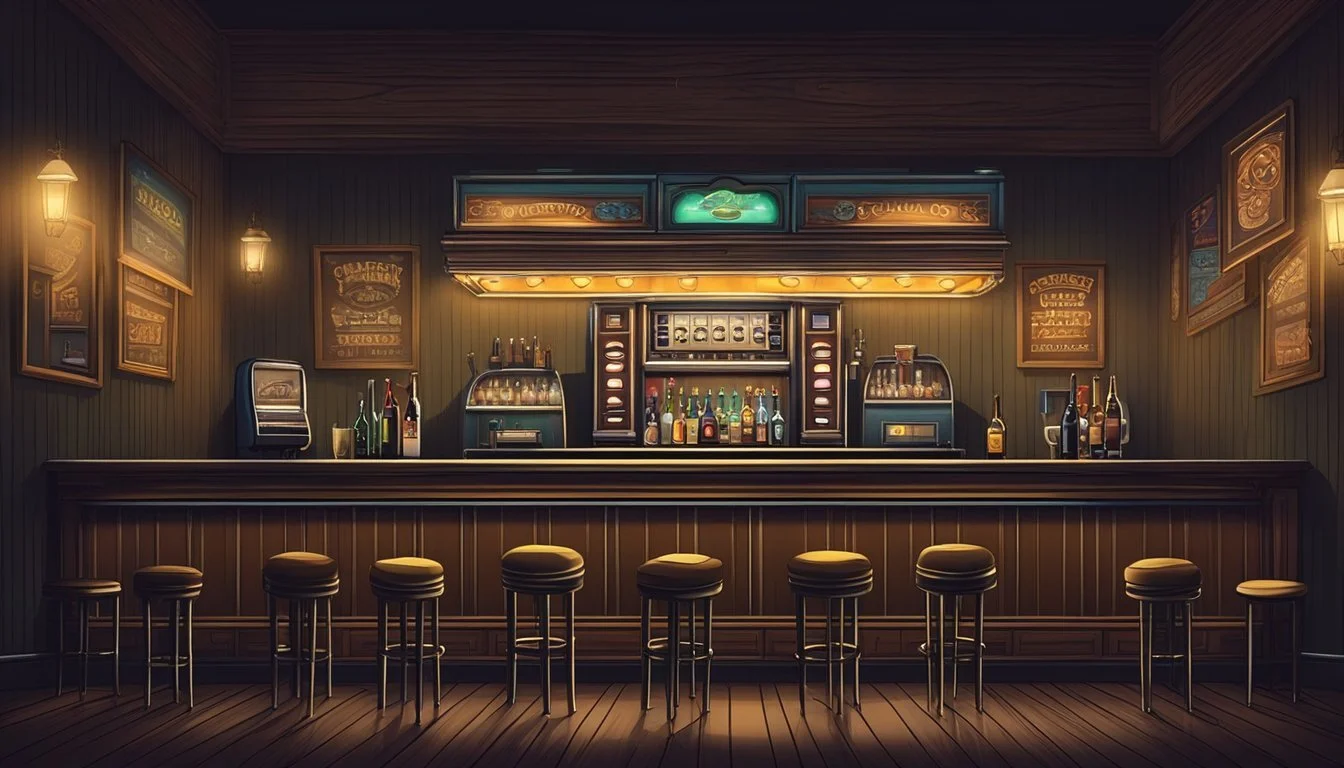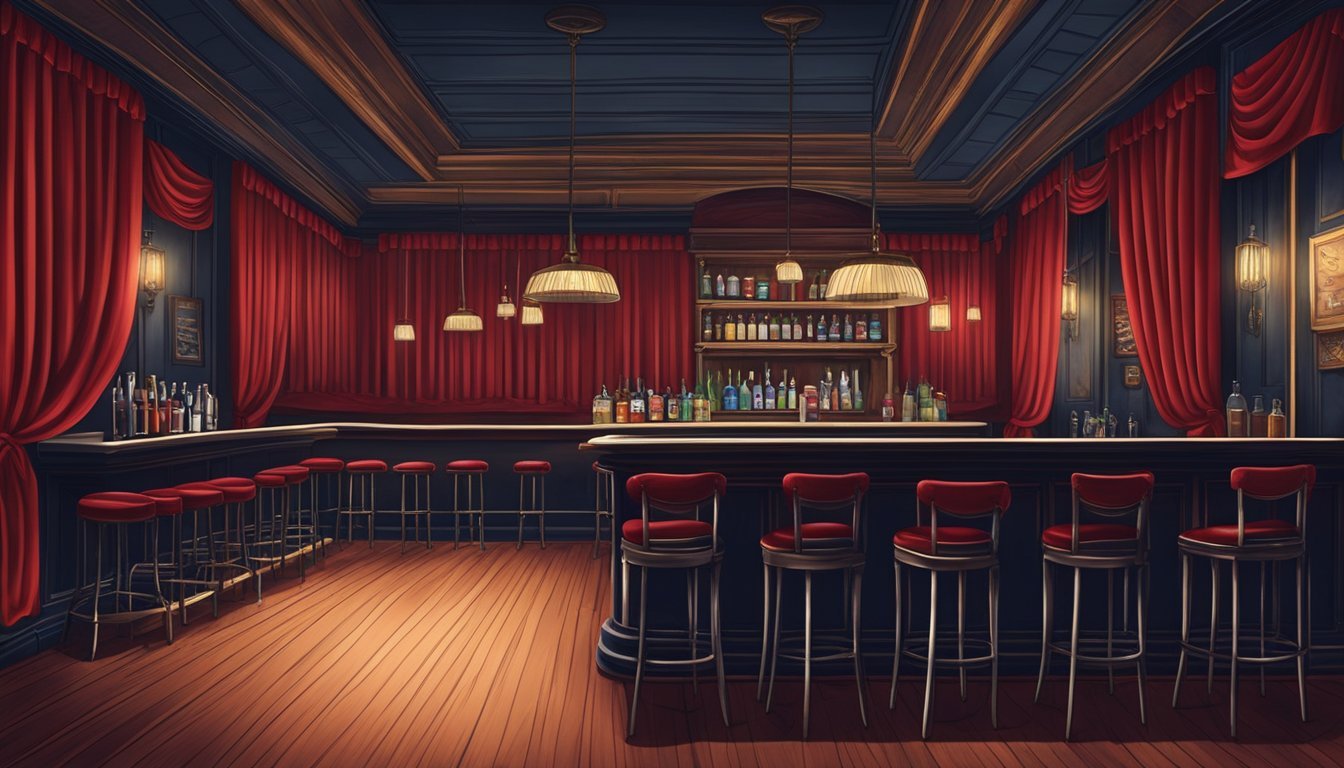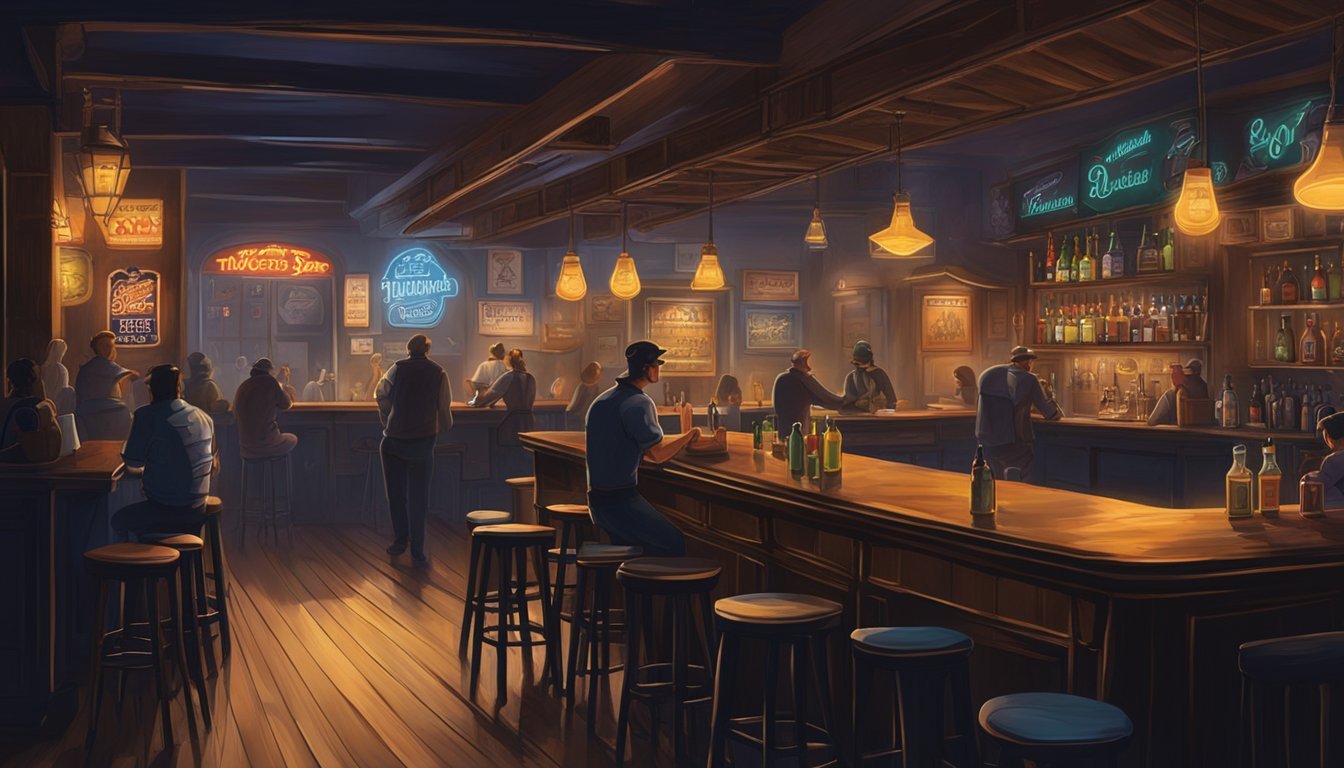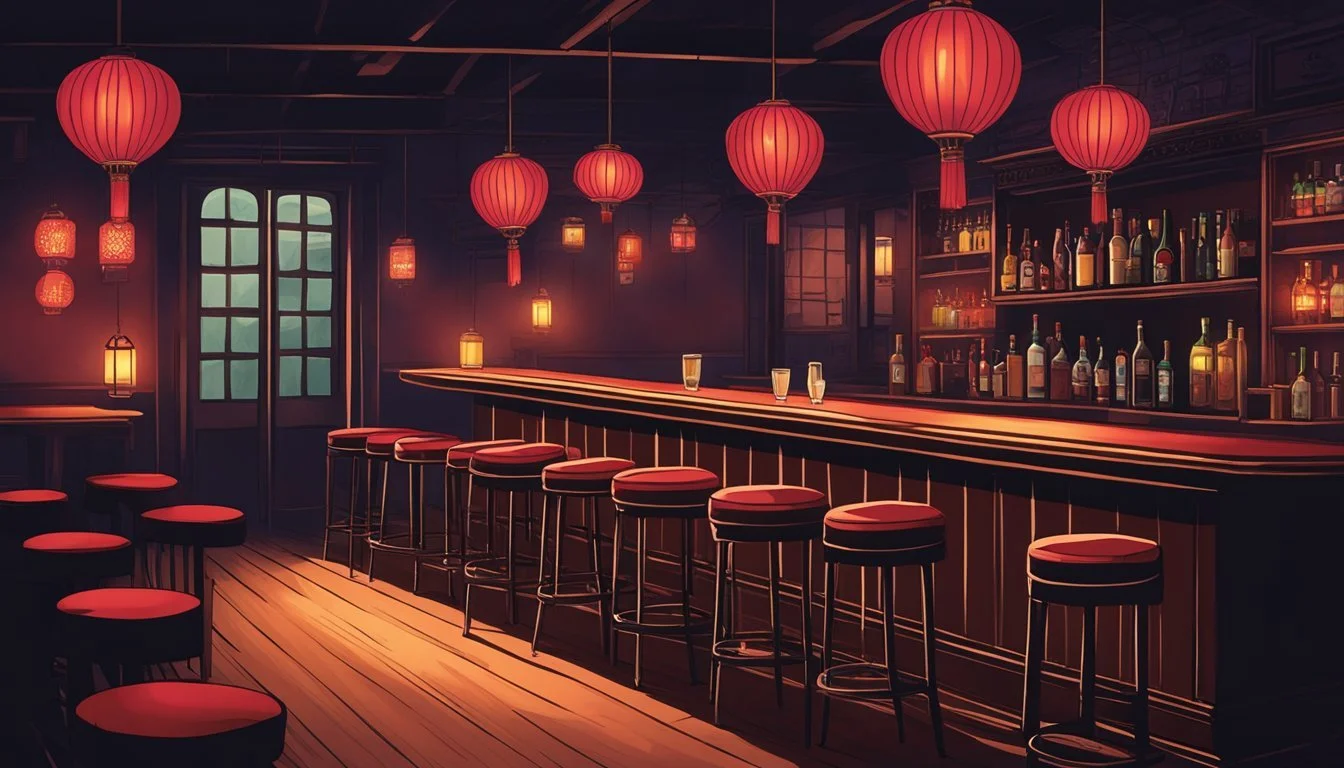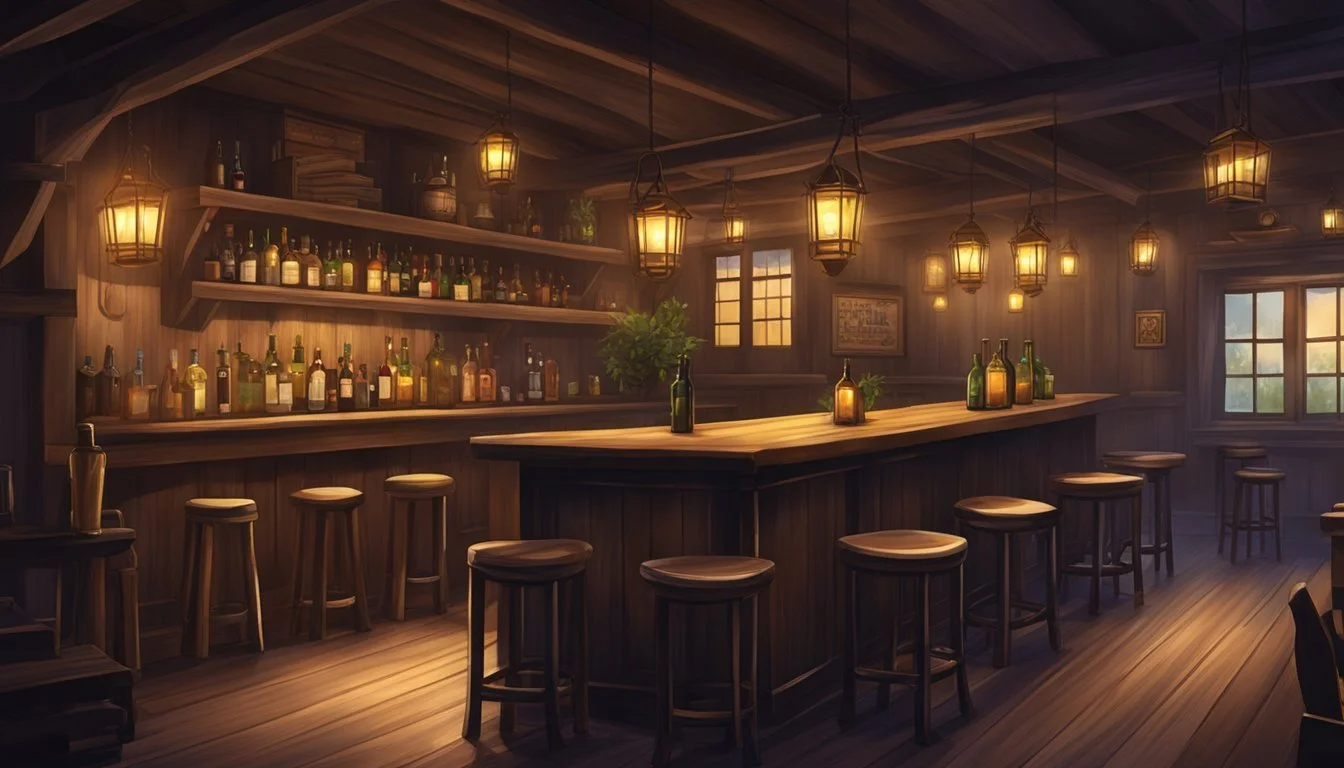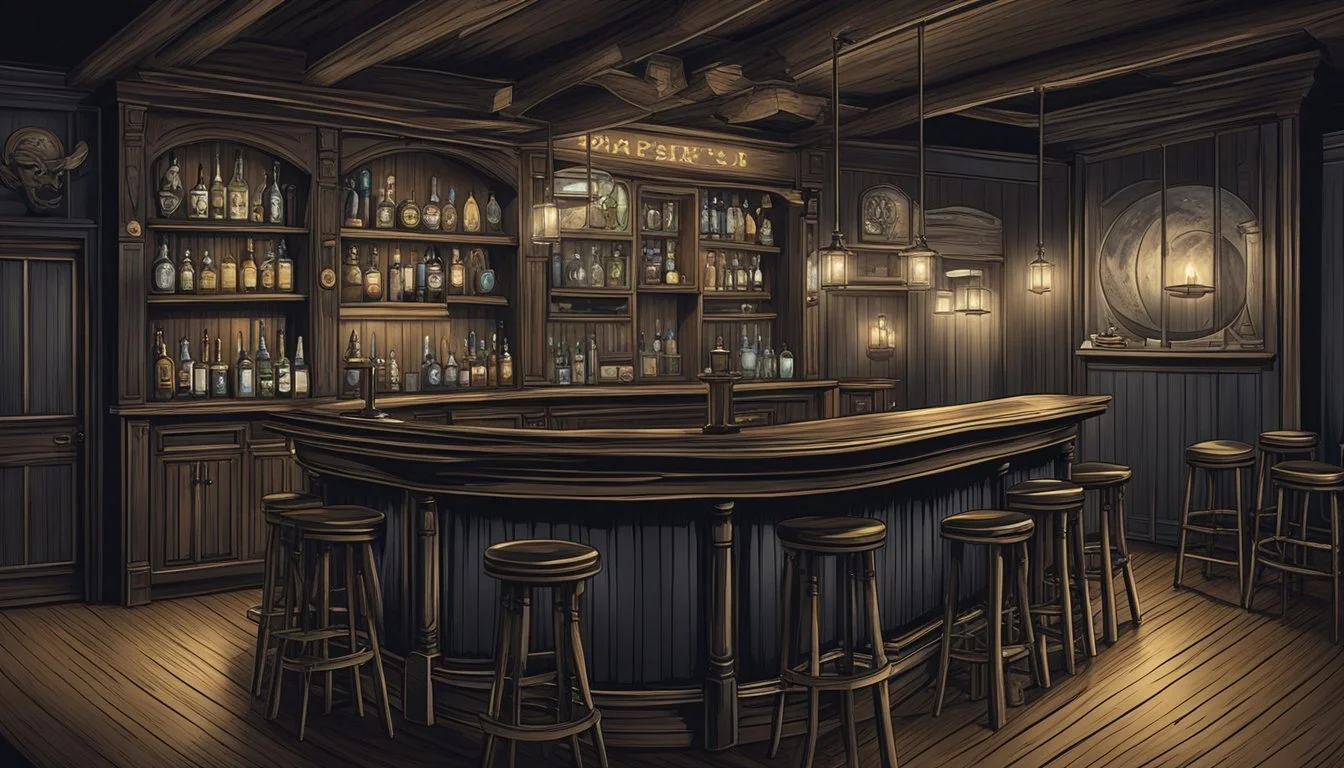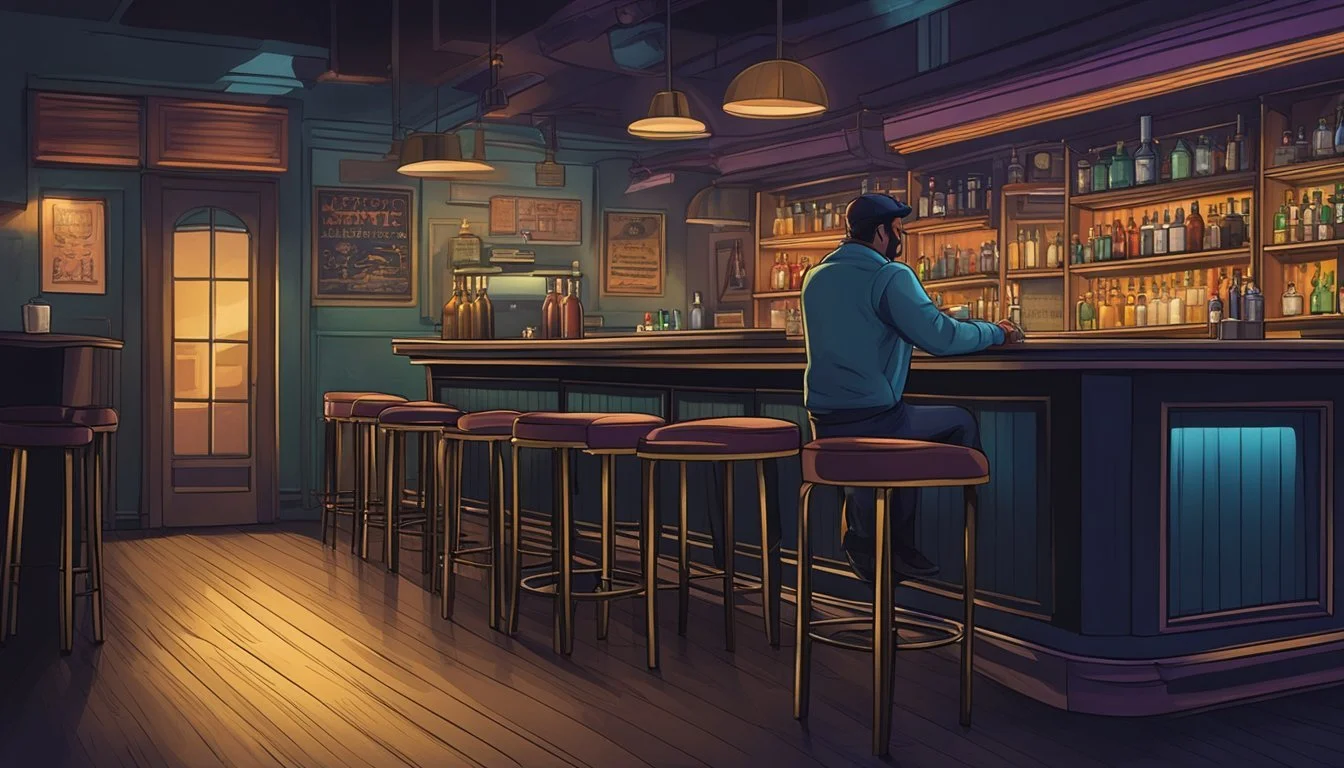Carroll Edward Cole: 8 Bars Where the Barfly Strangler Met His Victims
A Chilling Trail of Crime
Carroll Edward Cole terrorized multiple states across America in the 1970s and early 1980s as a prolific serial killer. Known as the "Barfly Strangler," Cole targeted women he encountered in bars, leaving a trail of victims from California to Nevada and beyond.
Cole's pattern of meeting victims in bars provides a chilling glimpse into the hunting grounds of a serial killer. This article examines eight specific establishments where Cole crossed paths with the women who would become his victims, shedding light on the dangerous intersections between predator and prey in seemingly ordinary social settings.
1) The Blue Parrot
The Blue Parrot bar in San Diego, California, was one of the establishments frequented by Carroll Edward Cole during his killing spree in the late 1970s. This dimly lit watering hole provided Cole with an ideal hunting ground for potential victims.
The bar's relaxed atmosphere and regular crowd of locals made it easy for Cole to blend in and approach unsuspecting women. He often posed as a friendly, charming patron looking for companionship.
Cole's modus operandi involved striking up conversations with women at the bar, sometimes buying them drinks to gain their trust. He would then suggest leaving together, often under the pretense of continuing their evening elsewhere.
Several of Cole's victims were last seen alive at The Blue Parrot. The bar's location near major roadways allowed Cole to quickly leave the area with his victims, making it difficult for authorities to trace his movements.
The Blue Parrot's role in Cole's crimes serves as a chilling reminder of how seemingly safe public spaces can become dangerous when predators like Cole are on the prowl.
2) Oakwood Lounge
The Oakwood Lounge was a dimly lit bar frequented by Carroll Edward Cole during his killing spree. Located in a seedy part of town, it attracted a diverse clientele of locals and drifters.
Cole often visited this establishment in search of potential victims. The bar's relaxed atmosphere and cheap drinks made it easy for him to blend in and strike up conversations with unsuspecting women.
On several occasions, Cole met women at the Oakwood Lounge who would later become his victims. He used his charm and seemingly harmless demeanor to gain their trust before luring them away from the safety of the bar.
The Oakwood Lounge unwittingly played a role in Cole's criminal activities. Its lax security and the era's lack of awareness about serial killers created an environment where predators like Cole could operate undetected.
Law enforcement later identified the Oakwood Lounge as a key location in Cole's pattern of selecting victims. This information helped investigators piece together his movements and build a case against him.
3) The Velvet Hook
The Velvet Hook was a dimly lit bar in Las Vegas where Carroll Edward Cole frequented during his killing spree in the early 1980s. This establishment gained notoriety as one of the locations where Cole met some of his victims.
The bar's plush interior and subdued atmosphere attracted a diverse clientele, including both locals and tourists. Cole often positioned himself at the bar, striking up conversations with lone women who caught his attention.
Investigators later discovered that at least two of Cole's victims had last been seen alive at The Velvet Hook. These unfortunate encounters highlighted the dangers lurking in seemingly innocuous social settings.
The bar's management cooperated fully with law enforcement during the investigation. They provided security camera footage and employee statements that proved crucial in piecing together Cole's movements and identifying potential victims.
After Cole's arrest, The Velvet Hook became an unwitting part of Las Vegas's dark history. The establishment eventually closed its doors, unable to shake off the grim association with the Barfly Strangler's crimes.
4) The Night Owl Tavern
The Night Owl Tavern was a dimly lit establishment frequented by Carroll Edward Cole during his killing spree. Located in a seedy part of town, this bar attracted a diverse crowd of night owls and lonely souls.
Cole often visited the Night Owl Tavern in search of potential victims. The bar's late hours and relaxed atmosphere made it an ideal hunting ground for the Barfly Strangler.
On multiple occasions, Cole met women at this tavern and lured them away with promises of companionship. The Night Owl's reputation as a place for casual encounters made it easier for him to approach unsuspecting targets.
Law enforcement later identified the Night Owl Tavern as a key location in Cole's pattern of predatory behavior. Investigators interviewed staff and patrons, piecing together crucial information about Cole's activities and movements.
The Night Owl Tavern's connection to Cole's crimes serves as a chilling reminder of the dangers that can lurk in seemingly ordinary places. It highlights the importance of awareness and caution in social settings, particularly late at night.
5) Crimson Lantern
The Crimson Lantern, a dimly lit bar in Las Vegas, Nevada, became an infamous location in Carroll Edward Cole's string of murders. This establishment, known for its red-tinted lighting and smoky atmosphere, attracted a diverse clientele of locals and tourists alike.
Cole frequented the Crimson Lantern in the early 1980s during his time in Las Vegas. The bar's layout, with secluded booths and a long, crowded counter, provided ample opportunities for Cole to observe and approach potential victims.
On at least two occasions, Cole met women at the Crimson Lantern whom he later killed. The bar's late hours and relaxed atmosphere made it easy for him to strike up conversations with unsuspecting patrons.
Law enforcement later identified the Crimson Lantern as a key location in their investigation of Cole's crimes. Witness statements from bar staff and regular customers helped piece together Cole's movements and patterns of behavior during his time in Las Vegas.
The Crimson Lantern's connection to Cole's murders brought unwanted attention to the establishment. It serves as a chilling reminder of how ordinary places can become linked to extraordinary crimes.
6) The Old Harbinger Inn
The Old Harbinger Inn was a dimly lit establishment frequented by Carroll Edward Cole during his killing spree. Located in a rundown part of Dallas, Texas, this seedy bar attracted a diverse clientele, including those on society's fringes.
Cole was known to visit The Old Harbinger Inn regularly, blending in with the other patrons. He often sat at the bar, nursing cheap drinks and observing potential victims.
The bar's worn interior and lax security made it an ideal hunting ground for Cole. He could easily strike up conversations with lonely women without drawing much attention.
On November 11, 1980, Cole met one of his victims at The Old Harbinger Inn. He lured her away from the bar under false pretenses, leading to her tragic demise.
The Old Harbinger Inn's role in Cole's crimes came to light during the police investigation. Witnesses reported seeing Cole leave with the victim on that fateful night.
This bar serves as a chilling reminder of how Cole exploited vulnerable individuals in seemingly ordinary places. It underscores the importance of awareness and caution, even in familiar settings.
7) Silver Moon Saloon
The Silver Moon Saloon was a dimly lit establishment in Dallas, Texas, where Carroll Edward Cole frequented in the late 1970s. This bar became one of the hunting grounds for the notorious "Barfly Strangler" as he sought out potential victims.
Cole often visited the Silver Moon Saloon during weeknights, blending in with the regular patrons. He would sit at the bar, nursing his drinks and observing the women who came in alone or in small groups.
The Silver Moon's relaxed atmosphere and diverse clientele made it an ideal location for Cole to operate undetected. He would strike up conversations with women, using his charm and smooth talk to gain their trust.
Witnesses later reported seeing Cole leave the Silver Moon Saloon with at least two women on separate occasions. These women were never seen alive again, their disappearances adding to the growing list of Cole's victims.
Law enforcement eventually connected Cole's presence at the Silver Moon Saloon to several missing persons cases in the Dallas area. This information proved crucial in building the case against the Barfly Strangler and understanding his modus operandi.
8) The Quiet Corner Pub
The Quiet Corner Pub was a small, unassuming establishment located in Dallas, Texas. It became infamous as one of the locations where Carroll Edward Cole met some of his victims in the early 1980s.
Known for its dim lighting and secluded booths, the pub attracted a diverse clientele seeking privacy and anonymity. Cole frequented this bar during his time in Dallas, taking advantage of its low-key atmosphere to blend in with other patrons.
The pub's layout provided ample opportunities for Cole to observe and engage with potential victims without drawing attention to himself. Its proximity to low-cost motels made it an ideal hunting ground for the serial killer.
Law enforcement later identified The Quiet Corner Pub as a crucial location in their investigation of Cole's crimes. Witnesses reported seeing him there on multiple occasions, often in the company of women who were later reported missing.
The pub's role in Cole's criminal activities serves as a chilling reminder of how seemingly ordinary places can become linked to extraordinary acts of violence. It highlights the importance of remaining vigilant, even in familiar settings.
Background on Carroll Edward Cole
Carroll Edward Cole was a prolific American serial killer active in the 1970s and early 1980s. His crimes spanned multiple states, with many victims being women he met in bars.
Early Life and Psychological Profile
Born on May 9, 1938, in Sioux City, Iowa, Cole was the second son of LaVerne and Vesta Cole. The family moved to Richmond, California when Cole was young. His father's absence during World War II left a significant impact.
Cole developed severe psychological issues early in life. He exhibited violent tendencies and harbored deep-seated resentment towards women, stemming from a troubled relationship with his mother.
As a child, Cole claimed to have strangled a classmate. This early incident foreshadowed his future crimes and indicated his dangerous inclinations from a young age.
Criminal History Before the Murders
Cole's criminal activities began well before his killing spree. He had a history of petty crimes and violent outbursts throughout his youth and early adulthood.
In 1960, Cole was discharged from the U.S. Army after attempting suicide. He was diagnosed with antisocial personality disorder and deemed unfit for military service.
Cole's pre-murder criminal record included:
Multiple arrests for public intoxication
Attempted murder charges (later reduced)
Various assault charges
These incidents showcased Cole's escalating violent behavior and inability to control his impulses, setting the stage for his later murders.
Impact of Cole's Crimes
Carroll Edward Cole's murder spree sent shockwaves through multiple states across America. His actions prompted significant changes in law enforcement practices and captured widespread media attention.
Law Enforcement Response
Cole's crimes exposed weaknesses in inter-state communication among police departments. This realization led to improved information sharing systems between jurisdictions.
Several states implemented new protocols for investigating potential serial killings. These included creating specialized task forces and enhancing forensic analysis techniques.
The case highlighted the importance of thorough background checks. Many departments began more rigorous screening processes for parolees and individuals with violent histories.
Cole's ability to move undetected between states prompted discussions about a national database for violent offenders. This idea eventually contributed to the development of more comprehensive criminal tracking systems.
Media Coverage
Cole's crimes garnered extensive media attention, particularly in the states where he operated. Local newspapers and television stations provided regular updates on the investigations and trials.
The "Barfly Strangler" moniker became a staple in headlines, capturing public interest and fear. Many media outlets focused on Cole's pattern of meeting victims in bars, sparking debates about personal safety in social settings.
True crime authors and documentarians found Cole's case particularly compelling. Several books and television specials explored his troubled childhood and the psychological factors behind his crimes.
The media coverage raised awareness about the prevalence of serial killers in America. It also sparked conversations about the role of alcohol in violent crimes and the vulnerabilities of women in bar settings.

